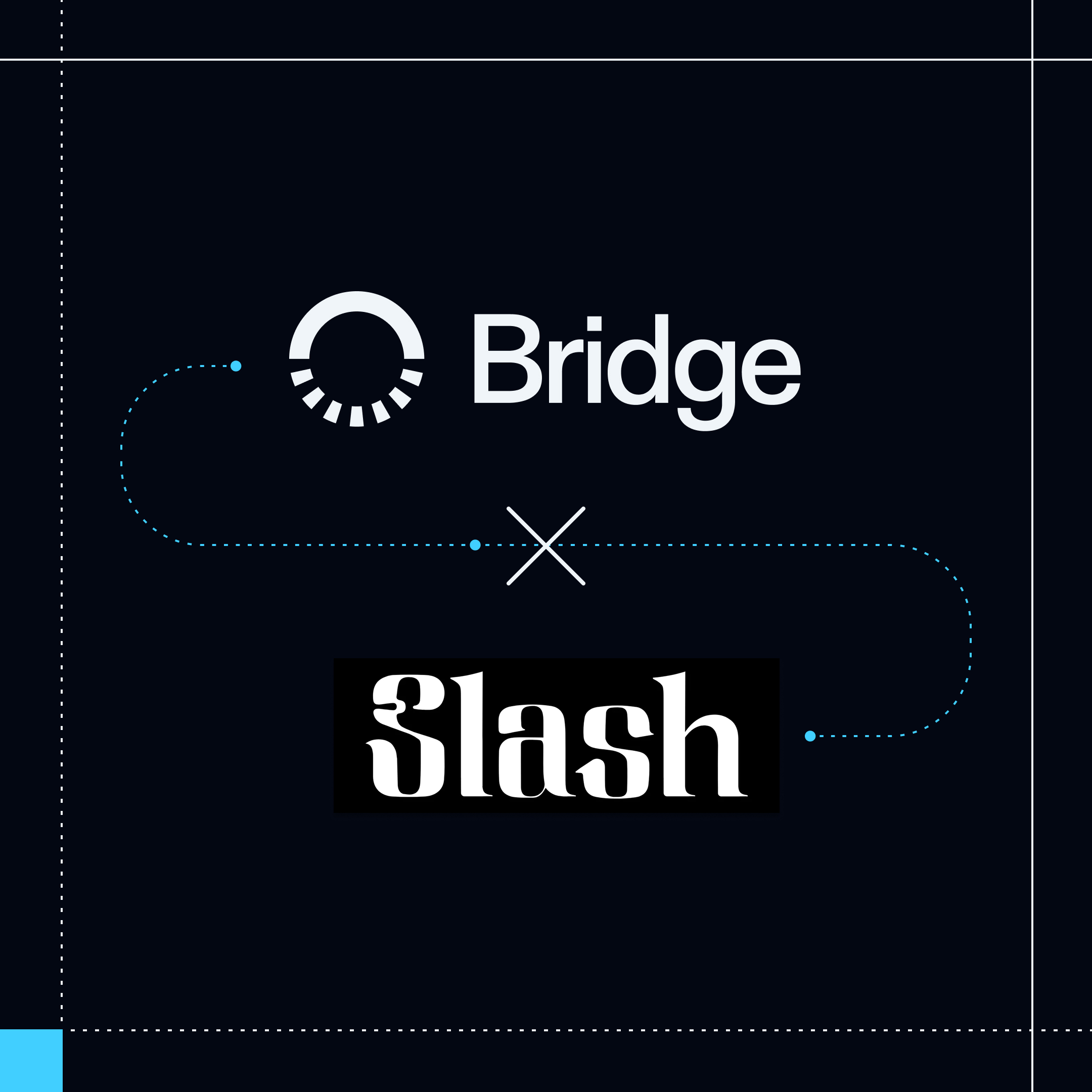Introduction
Founded in 2021, Slash is a pioneering fintech company dedicated to revolutionizing business banking by offering industry-specific solutions. is on a mission to provide business banking that recognizes the fundamental differences between industries. By combining the best of traditional banking with industry-specific features, Slash provides tailored financial solutions designed for the digital economy. In late 2024, the company incorporated stablecoin payments into its platform to give businesses faster, more flexible ways to move money across borders.
“Our goal is to be one of the first neobanks to fully embrace crypto,” said Andy Jiang, product manager at Slash. “A lot of companies in this space are doing it at a surface level, but we see the opportunity to think bigger by using crypto to offer financial services in a more agile way, launch new products like yield accounts and European accounts, and expand our reach to more regions around the world.”
Challenges
For US clients, moving between fiat and crypto meant navigating multiple on- and off-ramps, which drove up costs while impacting the user experience. Slash wanted to simplify that process by enabling clients to move seamlessly between currencies within a single platform.
In addition, Slash wanted to offer its own stablecoin to provide domestic and global clients with faster access to liquidity, help reduce their reliance on third parties, and improve their user experience. “Instead of helping our clients hold USDC on Ethereum, USDC on Base, or USDT on Tron, we wanted to help them hold one type of stablecoin that does everything they need,” Jiang said.
Solution
“Collaborating with Bridge gave us confidence from day one,” Jiang said. “They’re backed by Stripe, have proven enterprise experience, and support a wide range of payment rails. They gave us a lot of confidence that they were the right long-term partner to build our solution with.”
Slash’s clients can now easily convert between stablecoins like USDT and USDC and send stablecoin payments without needing to hold crypto or convert funds manually. Everything can be managed directly from the Slash dashboard, simplifying how businesses use stablecoins for banking, payments, and global operations.
In August 2025, Slash worked with Bridge to introduce USDSL, its own stablecoin product that’s backed by US Treasuries and cash equivalents. Clients can now use USDSL to avoid delays and foreign exchange fees while earning rewards on their balance. In addition, they can receive USDSL on Base by depositing coins from all the major networks, and redeem USDSL for U.S. dollars, USDC, or USDT at any time, including weekends and bank holidays. Consolidating all their coins onto USDSL reduces clients’ operational complexity while improving liquidity. Soon Slash will be leveraging additional benefits of Open Issuance, gaining deeper liquidity and interoperability with other Open Issuance stablecoins.
“We work extremely closely with Bridge and consider them our long-term partner. Bridge helped us optimize the user experience so we get all the benefits of leveraging crypto rails without adding confusion for our users. We see it as leapfrogging the traditional view that crypto UX has to be complicated. Our clients now get all the benefits of crypto, like global banking, permissionless access, and control over funds, without the downsides like managing wallets or secret keys.”

Results
Clients can now easily use stablecoins to fund accounts, move money globally, and incorporate stablecoins into their operations without technical barriers or operational overhead. For example, international users can use stablecoins instead of wire transfers to pay U.S. suppliers via bank rails, avoiding the five-day processing window and 1% fee they would otherwise face. And with USDSL, Slash can offer faster access, higher reliability, and a simplified user experience, all of which helps attract clients.
In addition, the partnership helped unlock a new source of revenue for Slash by monetizing its crypto transaction volume instead of losing those transactions to third-party providers.
Conclusion
Talk to sales
.jpg)


